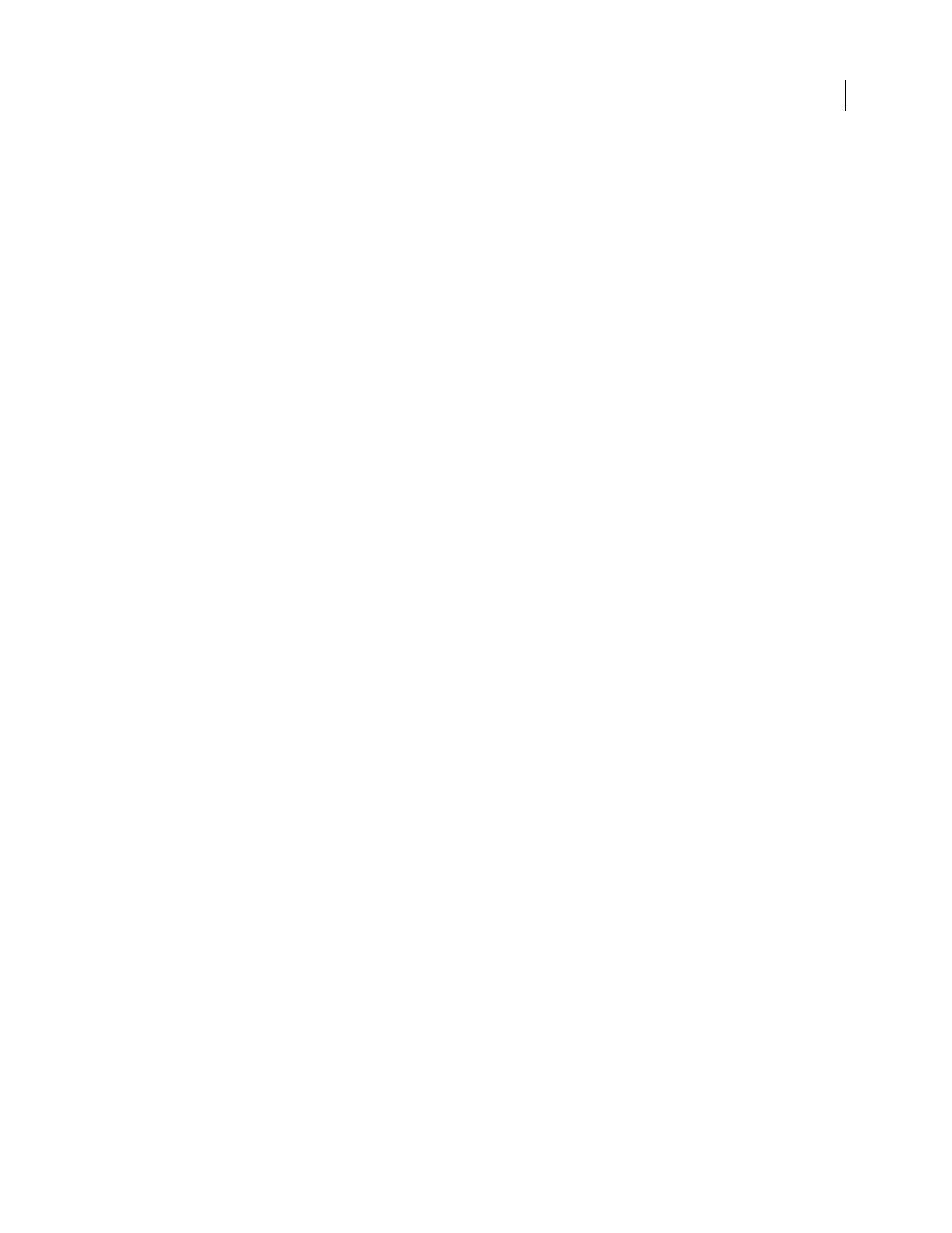Adobe InDesign CS3 User Manual
Page 475

INDESIGN CS3
User Guide
468
To change how much the component inks in abutting colors can vary before causing those colors to trap, increase or
decrease the value for Step in the New Trap Preset or Modify Trap Preset Options dialog box. The default is 10%. For
best results, use a value from 8% to 20%. Lower percentages increase sensitivity to color differences and result in
more traps.
Black Color
Indicates the minimum amount of black ink required before the Black trap width setting is applied. The
default value is 100%. For best results, use a value no lower than 70%.
Black Density
Indicates the neutral density value at or above which InDesign considers an ink to be black. For
example, if you want a dark spot ink to use the Black trap width setting, enter the neutral density value here. This
value is typically set near the default of 1.6.
Sliding Trap
Determines when the trapping engine starts to straddle the centerline of the color boundary. The value
refers to the proportion of the lighter color’s neutral density value to a darker, abutting color’s neutral density value.
For example, setting the Sliding Trap value to 70% moves the point at which the trap begins to straddle the centerline
to where the lighter color exceeds 70% of the darker color in neutral density (lighter color’s neutral density divided
by darker color’s neutral density > 0.70). Colors of identical neutral density will always have their traps exactly
straddle the centerline, unless the Sliding Trap is set to 100%.
Trap Color Reduction
Indicates the degree to which components from abutting colors are used to reduce the trap
color. This setting is useful for preventing certain abutting colors (such as pastels) from making an unsightly trap
that is darker than either color. Specifying a Trap Color Reduction lower than 100% begins to lighten the color of the
trap; a Trap Color Reduction value of 0% makes a trap with a neutral density equal to the neutral density of the darker
color.
Trapping imported graphics
You can create a trap preset to control traps within images, and to control traps between bitmap images (such as
photographs and those saved in raster PDF files) and vector objects (such as those from a drawing program and
vector PDF files). Each trapping engine handles imported graphics differently. It’s important to be aware of these
differences when setting trapping options.
Trap Placement
Provides options for determining where the trap falls when you trap vector objects (including
objects drawn in InDesign) to bitmap images. All options except Neutral Density create a visually consistent edge.
Center creates a trap that straddles the edge between objects and images. Choke causes objects to overlap the
abutting image. Neutral Density applies the same trapping rules as used elsewhere in the document. Trapping an
object to a photograph with the Neutral Density setting can result in noticeably uneven edges as the trap moves from
one side of the edge to another. Spread causes the bitmap image to overlap the abutting object.
Trap Objects To Images
Ensures that vector objects (such as frames used as keylines) trap to images, using the Trap
Placement settings. If vector objects don’t overlap images in a trapping page range, consider turning this option off
to speed trapping of that page range.
Trap Images To Images
Turns on trapping along the boundary of overlapping or abutting bitmap images. This
feature is on by default.
Trap Images Internally
Turns on trapping among colors within each individual bitmap image (not just where they
touch vector artwork and text). Use this option only for page ranges containing simple, high-contrast images, such
as screen shots or cartoons. Leave it unselected for continuous-tone and other complicated images, as it will create
bad traps. Trapping is faster when this option is unselected.
Trap 1-Bit Images
Ensures that 1-bit images trap to abutting objects. This option doesn’t use the Image Trap
Placement settings, because 1-bit images use only one color. In most cases, leave this option selected. In some cases,
such as with 1-bit images where pixels are widely spaced, selecting this option may darken the image and slow the
trapping.
